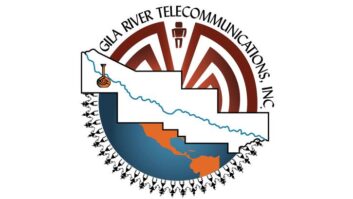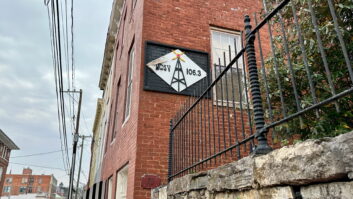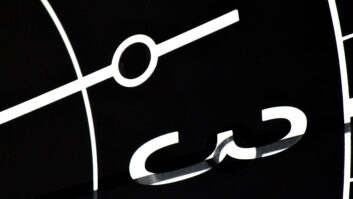WPFB 910 AM, Middletown, Ohio, signed on the air in 1947, followed by the FM on 105.9 MHz in 1958.
For decades WPFB was a regional powerhouse dynasty in southwest Ohio, under the stewardship of founder Paul F. Braden, who pioneered many innovations in programming and engineering. These included developing the station’s own Musiplex SCA background music service, as well as being one of the first FMs to utilize circular polarization.

The station became an institution and created a talent pool that spawned dozens of successful broadcasters for half a century.
In November of 1967, I landed my first broadcast engineering job working for Chief Engineer Cal Williams at WPFB(AM/FM) to pay my way through college and to serve as a future co-op position. A year later, I accepted a position at WLWD(TV), but a part of me always lingered at WPFB, with all its special memories. Little did I know the role I would play 50 years later in resurrecting this “phoenix from the ashes” in my own personal story.
My next experience with the stations came in 2015 when J.M. Stitt & Associates was retained by Northern Kentucky University to assume engineering responsibilities for their radio stations. These included WNKU, which I had built and put on the air for them in the mid ’80s, as well as WPFB Ñ now WNKN Ñ which NKU acquired from Braden’s son in 2011.

TIME TOOK ITS TOLL
The Middletown stations had been operating successfully for decades; however, due to a lack of maintenance and reinvestment in the infrastructure, the building and technical plant had fallen into a state of significant disrepair.
For instance, a structural analysis revealed the 540-foot tower needed extensive repairs just to meet TIA-222-G, including new guy cables and insulators, addition of bracing to reinforce bent members resulting from tenant antenna overload, plus replacing deteriorated feedline and supports, the lighting system, and portions of the AM counterpoise system.
The original RCA BTF-10C/D FM transmitters installed in 1958 were still in service, albeit intermittently, with all manner of “temporary” modifications but could no longer make full power reliably. The Ku Band STL downlink antenna mount was perched on an automobile tire.

Furthermore, the building that housed the transmitters and former studios (a 150-year-old farmhouse located 600 feet from the tower) had experienced flooding and structural damage, contained numerous hazardous materials and was no longer habitable. An extensive refurbishing project was long overdue.
21st CENTURY CHANGES
Since the stations were now programmed and operated from remote studios, I proposed a plan to renovate the tower and its ancillary systems, abandon the old farmhouse studio/transmitter building and its 600-foot feedline run to the tower, and build new transmission facilities at the base of the tower.
In order to fund the project, the university elected to sell the AM station but retain the site and lease the use of the tower and AM antenna system. The WPFB(AM) transmitter would be relocated to an existing concrete block building at the base of the tower, which also housed a tenant, WOXY(FM). A new prefab shelter would be installed for WNKN, along with AC utility, telco and internet service.

After stabilizing the existing systems and applying for an STA, the next order of business was to design the facility, obtain quotes and secure permits from assorted governmental agencies and utility providers seemingly intent on making the simplest task as difficult as possible.
[Interested in radio engineering? Check out the range of topics covered in RW eBooks.]
Other challenges of this project would be concurrently conducting the site work, tower repairs, counterpoise repairs and new prefab building installation while keeping all stations on the air.
The tower is a hybrid of 360 feet structure manufactured by Dresser-Ideco in 1967 extended with 120 feet of lattice tower sections and a 60-foot-pole manufactured by Utility Tower Co. in 1973.

I managed to locate some drawings from the Stainless LLC archives to compliment the foundation inspections by Kleingers Group and tower inspections conducted by the late Ernie Jones of CEI and Jim Ruedlinger of ERI to develop our plans for restoring the tower. The 5/8-wave tower required all lines be isolated up to the 1/4-wave point where all were bonded to a new buss bar welded to the tower, replacing the existing hose clamp connections which arced on modulation peaks. This required fabrication of custom insulated members and presented additional lightning protection challenges.
The tower repair bid was awarded to Worldwide Communications: We were on our way!
The existing block building that would house the AM transmitter and FM tower tenant’s transmitter also required repairs.
The tower compound area was cluttered with abandoned wood utility sheds that had been used to house paging tenants and was overgrown with vegetation and trees Ñ some with trunks several inches in diameter. The site work included clearing and graveling the compound and guy anchors, underground utilities, and a new gravel access drive was laid to replace the dirt path from the old studios. The concrete foundation for the new prefab FM transmitter plant would also be located in the compound.

All this clearing and construction near the tower required an extensive revamp of the grounding and AM counterpoise system. For this unique project, I retained Kevin Kidd with AM Ground Systems to locate existing radials, temporarily relocate them during construction and then reconstruct the counterpoise system within the compound area. The result was a marked improvement in the AM signal.
The new transmitter building is a 20-foot x 12-foot prefab concrete unit from VFP with redundant HVAC units plus emergency exhaust fan, pre-wired AC distribution with TVSS and accommodations for a future generator. A solid-state Nautel GV15 with dual exciters was selected as the new transmitter. This model can be increased to a GV20 with just a software change, so it is operating conservatively. Furthermore, my associate Russ Hines and I installed a 1/4-wave stub to reduce any off channel energy, and we now utilize custom UPS units by Mesta Electronics for all clients’ tower sites.

The main STL feed from the remote studios at Northern Kentucky University was via a Ku Band satellite leased from PRSS, so a new downlink earth station was installed. Backup STL is provided by a Tieline Bridge-IT codecs switched seamlessly with a Broadcast Tools Silence Sentinel feeding a Telos Omnia One processor and stereo generator. A Burk ARC Plus Touch handles the remote control functions via Internet or phone. Several Inovonics monitors and the 730 RDS encoder round out the major additions to the transmitter plant.
With remote operation requiring the Sage Alerting Systems EnDec EAS monitors to be at the transmitter site, another challenge became reception of the LP-1 WLW(AM) while isolating the extremely strong field from WPFB(AM) only a few feet away. That was solved with a directional Belar LP-1 shielded loop antenna feeding a Crown RFBA-1 EAS monitor.

The new WNKN facility went on the air in February 2017.
NEW OWNERSHIP
Just as this project was nearing completion, the university made a decision to end its 33-year run as a public broadcaster and sell all of its radio stations.
WPFB 910 had previously been sold to Sacred Heart. Now, flagship station WNKU(FM) in Highland Heights, Ky., was being sold to Bible Broadcasting Network; WNKE(FM) in Portsmouth, Ohio, was going to EMF/K-Love; and our beautifully restored WNKN Ñ formerly WPFB Ñ was up for sale.
As it turns out, selling WNKN set the stage for the final chapter in this circle of life story.

WNKN was ultimately sold to Grant County Broadcasters in October 2017, co-owned by one Jeff Ziesmann. It turns out Ziesmann’s first job in broadcasting was working for me as a board operator at WGUC in 1976 and again later at WMLX.
Ziesmann was also one of those aforementioned successful broadcasters whose successful career included stints at WPFB and later was the architect of a remarkable turnaround of WNKR in Dry Ridge, Ky., which laid the ground work for his acquisition of WNKN.

Since assuming ownership, we have built a new studio collocated with WNKR that includes a Wheatstone console and ENCO DAD automation system. The satellite STL was replaced with with a GatesAir Intraplex IP Link 200 over a spectrum point-to-point fiber Ethernet link.
The format has returned to classic country, as formerly heard on WPFB(FM) “The Rebel,” with both stations now reaching a combined audience of over 2.9 million.
For both Jeff and me, this life adventure has come full circle with destiny bringing us to this special place as custodians of Paul Braden’s legacy and thankful for the opportunity to write yet another new chapter.
The author is president of JMS & Associates and chair of SBE Chapter 33 in southwestern Ohio. Contact him via email at [email protected].







